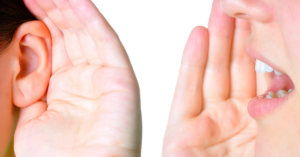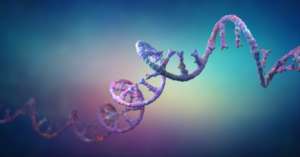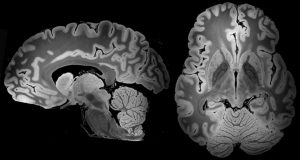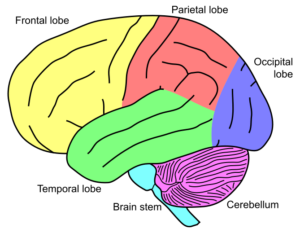
Snapshot: What is Articulation?
Articulation refers to the ability to produce speech sounds using the tongue, lips, jaw, and the roof of your mouth. All of these organs are also known as articulators. The Read More…
Your donation DOUBLED through April 30 thanks to anonymous donors who pledged to match your gift! DONATE NOW!
A collection of resources for individuals and families affected by SYNE1 Ataxia.
SYNE1 Ataxia is a recessive form of Ataxia. It is caused by a genetic mutation that is passed on from parents to their children. SYNE1 Ataxia leads to problems with balance and coordination, altered reflexes, and cognitive symptoms. There are multiple names for Ataxia caused by mutations in the SYNE1 gene. This type of Ataxia can be known as:
For complete information about symptoms, diagnosis, and treatment of Ataxia, visit our What is Ataxia? page. This page contains NAF’s resources that are specific to SYNE1 Ataxia.
Presented by Nicolas Dupré, MD, MSc, FRCP(C)
This webinar offers an overview of SYNE1 Ataxia, including the typical diagnostic journey for those affected, what to expect for clinical care, and an overview of current research.
SYNE1 Ataxia is a rare neurological disorder that causes people to lose their sense of balance and coordination. Though the gene mutations that cause SYNE1 Ataxia are present from birth, symptoms usually begin around age 30. However, SYNE1 Ataxia symptoms can begin as early as childhood and as late as mid-adulthood. It is estimated that SYNE1 Ataxia accounts for around 5% of all recessive Ataxia cases. Though quite rare, SYNE1 Ataxia is more common in certain place, including the Beauce region of Québec, Canada.
Typically, the first SYNE1 Ataxia symptoms to be noticed are balance and coordination problems. Other common symptoms include trouble with speaking and swallowing, as well as jumpy or double vision. People with SYNE1 Ataxia can also have cognitive changes, such as problems with attention, executive functioning, and working memory.
Less common symptoms include altered reflexes and scoliosis.
The symptoms of SYNE1 Ataxia typically begin around age 30, but childhood onset or later adult onset have also been reported. The condition is slowly progressive and may require a cane, walker, or rarely a wheelchair later in life. Life span is not shortened. Currently there is no cure for SYNE1 Ataxia.
SYNE1 Ataxia is an inherited genetic disorder. It is caused by an abnormality of a single gene called the SYNE1 gene. The abnormality can be passed from generation to generation by family members who carry it. Males and females are equally likely to inherit the genes that cause FA.
Inherited diseases like SYNE1 Ataxia occur when one pair of the body’s 20,000 genes does not work properly. Genes are microscopic structures within the cells of our bodies that contain instructions for every feature we inherit from our parents. Two copies of each gene are inherited; one copy from the mother and one from the father. SYNE1 Ataxia is autosomal recessive, which means that an individual only develops symptoms of the disease if both copies of his/her frataxin gene are not working properly.
An individual who has one copy of an altered or nonfunctioning SYNE1 gene does not develop any neurological symptoms and is called a carrier. For people who are carriers, the normal SYNE1 gene compensates for the nonfunctioning copy of the gene. However, a child whose parents are both carriers can inherit a “double dose” of the altered SYNE1 gene and will therefore develop SYNE1 Ataxia.
Most of the time carriers have no idea that they have an abnormal SYNE1 gene because they do not have symptoms or medical problems that go along with being a carrier. It is often only when a child is diagnosed with SYNE1 Ataxia that the parents learn that they are both carriers. When both parents are carriers, each of their children has a 25 percent chance of having SYNE1 Ataxia and a 50 percent chance of being a carrier.
In rare cases, SYNE1 Ataxia can also be caused by compound heterozygous mutations. Compound heterozygous describes a situation where someone has two different mutations in the SYNE1 gene, one in one gene copy and one in the other. Even though the mutations are slightly different from each other, when combined they still cause SYNE1 Ataxia.
A neurologic examination can determine whether a person has symptoms typical of SYNE1 Ataxia. A neurologist is often the most helpful specialist in recognizing symptoms and diagnosing the disease that causes Ataxia. A CT or MRI scan of the brain may show atrophy of the cerebellum. However, a specific diagnosis of SYNE1 Ataxia can only be made by a genetic test. This genetic test is sometimes clearly abnormal, but other times it is difficult to interpret. The test results often need to be evaluated by an expert in medical genetics.
SCAsource provides Ataxia research news, directly from researchers to the Ataxia community. Visit SCAsource to see their full collection. Here is a collection of articles relevant to SYNE1 Ataxia.

Articulation refers to the ability to produce speech sounds using the tongue, lips, jaw, and the roof of your mouth. All of these organs are also known as articulators. The Read More…

Speech intelligibility refers to how many words can be correctly understood by a listener. For example, if someone says the phrase, “My name is John,” and a listener hears, “My Read More…

Nystagmus, also known as ocular ataxia, is a term that refers to uncontrollable eye movement- usually a repetitive cycle of slow movement in a specific direction followed by a quick Read More…

What is a recessive disorder? A recessive disorder is one that has a specific disease mechanism. For a recessive disorder to occur, both copies of the causative gene must be Read More…

What is it? Magnetic resonance imaging (MRI) is a type of technology used to take detailed pictures of the body. It is commonly used to detect abnormalities in the body, Read More…

The cerebellum, often referred to as the “little brain”, is part of the brain that is located behind the cerebrum (forebrain). The cerebellum accounts for about 10% of the brain’s Read More…
Our generous donors help us fund promising Ataxia research and offer support services to people with Ataxia. Your gift today will help us continue to deliver on our mission to improve the lives of persons affected by Ataxia.
Join for FREE today! Become a part of the community that is working together to find a cure. As a member you will receive access to the latest Ataxia news with our e-newsletter and Generations publication.
